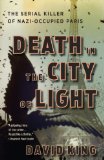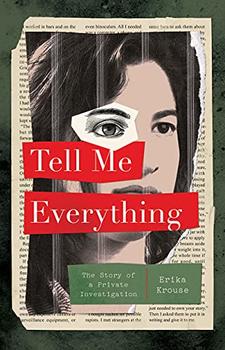Summary | Excerpt | Reviews | Beyond the Book | Readalikes | Genres & Themes | Author Bio

The Serial Killer of Nazi-Occupied Paris
by David King
Commissaire Massu had made some 3,257 arrests in his thirty-three
year career investigating crime in the French capital, but he had
never seen a case as heinous or as perplexing as this one. Who was
responsible for this "nightmare house"? Who, for that matter, were the victims, how many were there, and how exactly had they died? Most perplexing of all, what was the motive? The murderer - whoever he was - was not just killing his victims, he was dismembering them. The attempt to solve what Massu soon dubbed "the crime of the century"
had begun.
1.
GERMAN NIGHT
The German night has swallowed up the country. . . .
France is nothing but a silence; she is lost
somewhere in the night with all lights out.
- Antoine de Saint-Exupéry, letter to the New York Times
Magazine, November 29, 1942
FOUR years before, many of Paris's richest and most privileged
residents had begun fleeing the capital. The Duke of Windsor;
Prince George of Greece; Princess Winnie de Polignac and her
niece, Daisy Fellowes, the heiress to the Singer sewing fortune, had all
departed. The Aga Khan set out for Switzerland. Peggy Guggenheim
stored her art collection in a friend's barn and drove away in her Talbot, in the direction of the Haute Savoie ski resort of Megève.
Not far behind were a number of writers, painters, and artists who
had turned the City of Light into what New York Times art critic Harold
Rosenberg called "the laboratory of the twentieth century." James Joyce left for a village outside Vichy before continuing into Zurich.
Gertrude Stein and Alice B. Toklas departed for Culoz, near Annecy.
Marc Chagall, Henri Matisse, René Magritte, and Wassily Kandinsky headed south. Vladimir Nabokov secured the last ocean liner to New York. Walter Benjamin hiked across a mountain passageway into Spain, but made it no farther than Portbou, where he committed suicide at age forty-eight.
The scale of departures from the French capital had accelerated in
May 1940 with the Nazi invasion of Belgium, Luxembourg, and the
Netherlands. On the afternoon of June 3, when the air raid sirens began
to wail, the Luftwaffe pounded the Renault and Citroën factories, the bombs also falling onto the Air Ministry on Boulevard Victor. The
one-hour raid left a trail of street craters, massive piles of rubble, and
a block of apartment buildings looking, as journalist Alexander Werth
put it, "like a badly-cut piece of cheddar." Two hundred and fifty-four people had been killed and another six hundred and fifty-two injured. As the Nazi Wehrmacht advanced closer to the capital, nearly encircling
it from the north, the east, and the west, the exodus soon reached
epic proportions. Trains were booked far beyond capacity, forcing many
Parisians to leave by motorcar, truck, horse-drawn cart, hearse, or any
other contraption. More often, residents fled on foot, pushing selected
personal belongings, from mattresses to birdcages, onto bicycles,
motorcycles, prams, wheelbarrows, oxcarts, hay wains, coffee vendor
carts - virtually anything with wheels.
Legions of refugees struggled, under the hot summer sun, against
almost completely blocked roads, under the occasional strafing of the
Luftwaffe and, after Mussolini declared war on June 10, the attacks
of Italian planes. Automobiles were abandoned for lack of gasoline.
Rumors thrived in the oppressive climate of heat and hunger, feeding on
the painful memories of the First World War and the feelings of uncertainty that swirled around the present crisis. No one knew when, or if, they would be able to return home.
Of France's forty million people, an estimated six to ten million
inhabitants clogged the roads. Paris saw its population fall from nearly
three million to about eight hundred thousand. The mass exodus was
replicated in cities all over northern and eastern France, as the population headed south or southwest. The pilot and future author of The Little Prince, Antoine de Saint-Exupéry, peering down from his observation mission on the 2/33 Reconnaissance Squadron, thought that the mass movements looked like "a boot had scattered an ant-hill," sending the unfortunate refugees dispersing "without panic. Without hope, without despair, on the march as if in duty bound."
Excerpted from Death in the City of Light by David King. Copyright © 2011 by David King. Excerpted by permission of Crown. All rights reserved. No part of this excerpt may be reproduced or reprinted without permission in writing from the publisher.




When you are growing up there are two institutional places that affect you most powerfully: the church, which ...
Click Here to find out who said this, as well as discovering other famous literary quotes!
Your guide toexceptional books
BookBrowse seeks out and recommends the best in contemporary fiction and nonfiction—books that not only engage and entertain but also deepen our understanding of ourselves and the world around us.